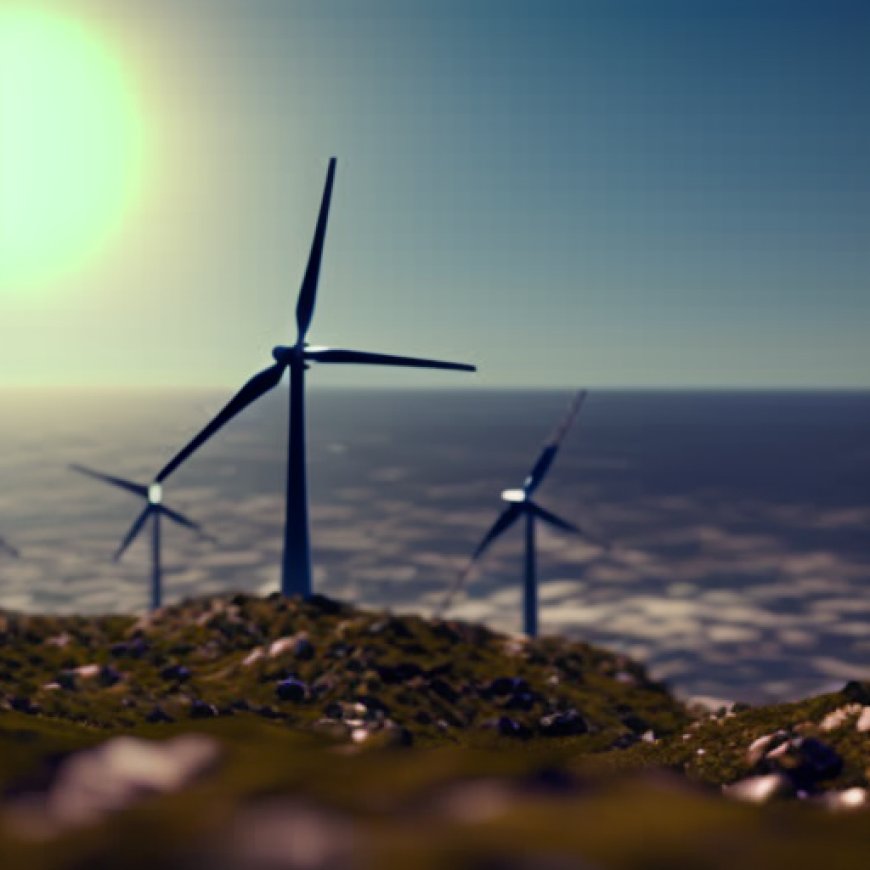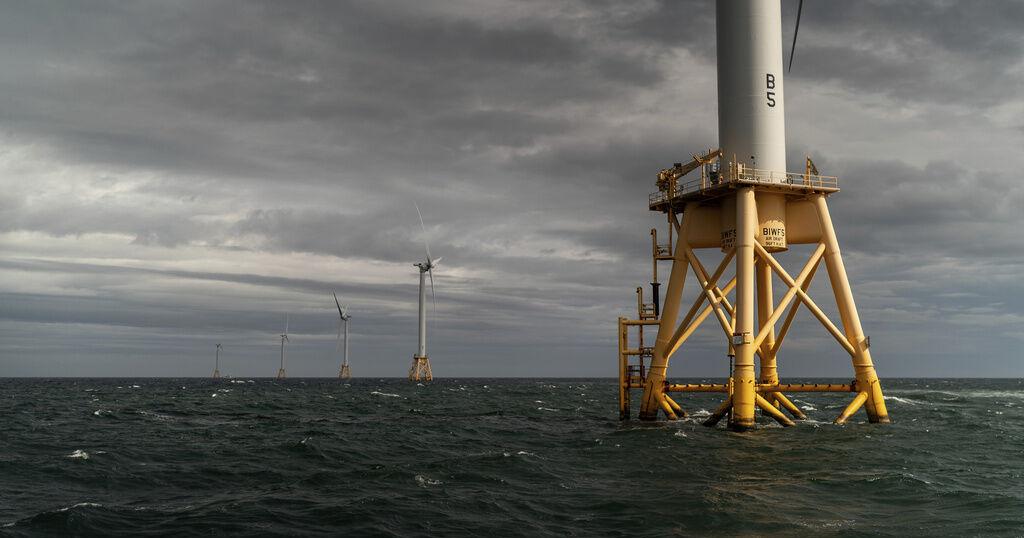Expanding offshore wind power in Del.
Expanding offshore wind power in Del. | The Latest from WDEL News | wdel.com 1150AM/101.7FM WDEL


Delaware’s Path Forward in Expanding Offshore Wind Power

How will Delaware chart a path forward in expanding the availability and use of offshore wind power?
Introduction
Lawmakers are considering a bill that spells out procurement procedures. Senate Bill 265, known as the Delaware Energy Solutions Act of 2024, was introduced last week.
The Purpose of the Bill
The bill, sponsored by State Senator Stephanie Hansen, D-Middletown, aims to establish a detailed framework for solicitation, consideration, and possible approval of a future offshore wind project in the Delaware Code. It has been developed through careful consideration and input from multiple state agencies, industry experts, energy researchers, and environmental advocates.
Key Provisions of the Bill
The bill does not automatically approve any offshore wind projects but establishes specific terms and conditions under which the State of Delaware will permit a qualified and experienced developer to move forward with a cost-effective offshore wind farm project. This will secure a cleaner and more sustainable future for Delawareans.
The bill authorizes the DNREC State Energy Office and the Delaware Public Service Commission to consult with the Delaware Renewable Energy Task Force to solicit proposals from developers interested in building offshore wind turbines, transmission lines, and interconnection facilities. The Public Service Commission will obtain public comment before approving a final solicitation document.
The State Energy Office is directed to procure between 800 and 1,200 megawatts of electricity to utilities, cooperatives, and third-party providers. The proposals must have a term of at least 20 years and meet benchmark pricing guidelines. They should also describe any possible impact on the electrical transmission system and energy markets, as well as provide detailed economic costs and benefits for the state. Factors such as potential jobs, supply chain requirements, and workforce development needs will be considered.
Emphasis on Sustainable Development Goals (SDGs)
By opening the door to offshore wind energy, Delaware is embracing a cleaner and more sustainable future while staying on track to meet the targets outlined in the Climate Solutions Act. As the lowest lying state in the country, Delaware is already experiencing the effects of climate change. Reducing greenhouse gases and finding cleaner ways to generate energy are crucial goals that align with the SDGs.
Statements from Officials
“This legislation will make Delaware more of an active player in offshore wind by allowing us to purchase wind-generated renewable energy in a fiscally responsible way. Thank you to the members of the General Assembly who have brought this important bill forward,” said Governor John Carney.
Conclusion
The Delaware Energy Solutions Act of 2024 provides a framework for expanding offshore wind power in Delaware. By considering the specific terms and conditions for offshore wind projects, the state aims to secure a cleaner and more sustainable future while contributing to the achievement of the SDGs.
SDGs, Targets, and Indicators
-
SDG 7: Affordable and Clean Energy
- Target 7.2: Increase substantially the share of renewable energy in the global energy mix
- Indicator 7.2.1: Renewable energy share in the total final energy consumption
-
SDG 13: Climate Action
- Target 13.2: Integrate climate change measures into national policies, strategies, and planning
- Indicator 13.2.1: Number of countries that have integrated mitigation, adaptation, impact reduction, and early warning into primary, secondary, and tertiary curricula
-
SDG 8: Decent Work and Economic Growth
- Target 8.5: By 2030, achieve full and productive employment and decent work for all women and men, including for young people and persons with disabilities, and equal pay for work of equal value
- Indicator 8.5.1: Average hourly earnings of female and male employees, by occupation, age group, and persons with disabilities
Analysis
The article discusses the introduction of Senate Bill 265, known as the Delaware Energy Solutions Act of 2024, which aims to establish a framework for the procurement and approval of a future offshore wind project in Delaware. The issues highlighted in the article are connected to the following SDGs, targets, and indicators:
1. SDG 7: Affordable and Clean Energy
The article addresses the expansion of offshore wind power as a means to achieve clean and renewable energy. This aligns with SDG 7, which aims to ensure access to affordable, reliable, sustainable, and modern energy for all. The specific target under this SDG that can be identified is:
- Target 7.2: Increase substantially the share of renewable energy in the global energy mix
This target is relevant because the article discusses the procurement of offshore wind turbines and transmission lines, which are sources of renewable energy.
2. SDG 13: Climate Action
The article emphasizes the need to reduce greenhouse gas emissions and combat climate change. This aligns with SDG 13, which aims to take urgent action to combat climate change and its impacts. The specific target under this SDG that can be identified is:
- Target 13.2: Integrate climate change measures into national policies, strategies, and planning
This target is relevant because the article mentions the integration of offshore wind energy into Delaware’s energy procurement process as a measure to address climate change.
3. SDG 8: Decent Work and Economic Growth
The article highlights the potential economic benefits of offshore wind projects, including job creation and workforce development. This aligns with SDG 8, which aims to promote sustained, inclusive, and sustainable economic growth, full and productive employment, and decent work for all. The specific target under this SDG that can be identified is:
- Target 8.5: By 2030, achieve full and productive employment and decent work for all women and men, including for young people and persons with disabilities, and equal pay for work of equal value
This target is relevant because the article mentions the consideration of potential jobs, supply chain requirements, and workforce development needs in the procurement of offshore wind projects.
Table: SDGs, Targets, and Indicators
| SDGs | Targets | Indicators |
|---|---|---|
| SDG 7: Affordable and Clean Energy | Target 7.2: Increase substantially the share of renewable energy in the global energy mix | Indicator 7.2.1: Renewable energy share in the total final energy consumption |
| SDG 13: Climate Action | Target 13.2: Integrate climate change measures into national policies, strategies, and planning | Indicator 13.2.1: Number of countries that have integrated mitigation, adaptation, impact reduction, and early warning into primary, secondary, and tertiary curricula |
| SDG 8: Decent Work and Economic Growth | Target 8.5: By 2030, achieve full and productive employment and decent work for all women and men, including for young people and persons with disabilities, and equal pay for work of equal value | Indicator 8.5.1: Average hourly earnings of female and male employees, by occupation, age group, and persons with disabilities |
Behold! This splendid article springs forth from the wellspring of knowledge, shaped by a wondrous proprietary AI technology that delved into a vast ocean of data, illuminating the path towards the Sustainable Development Goals. Remember that all rights are reserved by SDG Investors LLC, empowering us to champion progress together.
Source: wdel.com

Join us, as fellow seekers of change, on a transformative journey at https://sdgtalks.ai/welcome, where you can become a member and actively contribute to shaping a brighter future.







